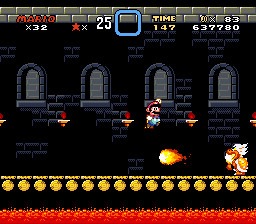The science of the double jump
There are many essential movements in video games that we just instinctively know. We assume that our characters can wall jump, immediately grab ledges, or keep up a constant running pace until you bounce off a wall (sustaining no damage whatsoever). And no movement is more natural to the gamer than the double jump – the thing that happens in game after game when, in mid-air, you press the jump button and see your character jump again. Of course, this is something pretty much limited to characters like Mario and Crash Bandicoot, because attempting a double jump in our world is going to lead to you flailing in mid-air between the first jump and the landing. But imagine that such a thing might be possible – could science help us perform a double jump?
To begin, how do we jump in the first place? Basically, our bodies are heavy, and the only way for a heavy object to defy the gravitational pull of the Earth is to have sufficient speed and strength to break this force. This is true of anything that jumps – jumping involves the application of force against a substrate (typically for us, this is the ground), which generates a reactive force propelling the jumper away. This works because of Newton’s Second Law, stating that there is an equal and opposite reaction – as we push on the substrate, it pushes us away. When we go to jump, our muscles contract like a spring, and channelling this in the right direction creates the lift necessary for the jumper to leave the ground. At this point, gravity starts to play its part, with the force counteracting the upwards motion once the reactive force is through – this interplay of forces is why vertical jumps take a parabolic path.
It is theoretically possible to generate a sufficient force from air to double jump
Through this description, you’ll probably notice some major issues in the way of the double jump. A human jumper produces the lift via contact with the ground, but in the air, this is obviously impossible. That would suggest, then, that an achievable double jump would require generating sufficient reactive force through contact with the air. In real life, this is undoable – the mass of the air is so small that it provides too small a reactionary force to accelerate your mass enough to propel you upwards again. If humans were able to generate this much force, forget about jumping – we’d be able to fly. But as we’re built currently, such a force would likely also rip your legs off in the process of pushing downwards.
It is theoretically possible to generate a sufficient force from air to double jump, but it’s not the only explanation. The Conservation of Momentum is another fundamental rule in physics, stating that the momentum of a system (a product of mass and velocity) does not change unless acted upon by an outside force – the amount of momentum remains the same, but some is lost from the original system and imparted to the outside element. As most double jumps begin at the apex of the first jump, this would suggest that a radical lowering of mass at that point would provide enough force to generate a second upward boost. One approach would be swiftly removing all your clothes and then launching them to the ground – based on the average human, at a speed of around 150m/s, so your naked frame would be in the air a little longer.
Of course, some video games throw tricks at us by partial way of explanation. When Mario heads into space on his Galaxy adventures, the radical shifts in gravity across worlds may help his case (as well as Luma star magic). Meanwhile, characters like Samus and other space adventurers have jetpacks and other forms of propulsion to make the second launch more feasible. But on the whole, although science doesn’t necessarily forbid it, humans won’t be following Mario’s launch trajectory any time soon.

Comments